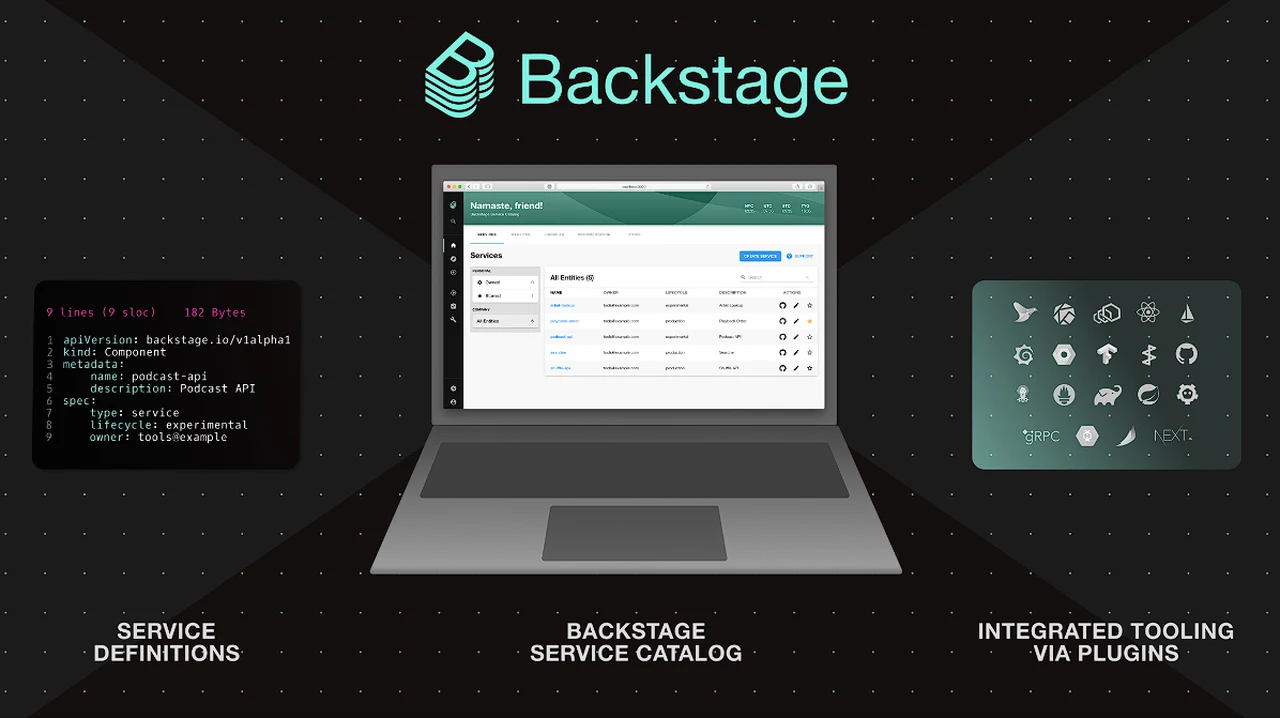Developers are the lifeblood of the technology industry, creating the software and platforms that power our digital world. However, they often face significant challenges and frustrations in their work, from managing a sprawling list of bookmarks to navigating the “ticket purgatory” of requesting new resources. The Backstage.io project, an open platform for building developer portals, aims to address these issues and improve the developer experience.
What is Backstage?
A Backstage developer portal can serve multiple functions. For developers, it can be the fastest way to create a new software component. For platform teams, it can encourage best practices. For an entire engineering organization, it can serve as the central nervous system for all software, tooling, and documentation.
Backstage unifies all infrastructure tooling, services, and documentation, creating a streamlined development environment from end to end. It enables one team to manage multiple services and makes it possible for a company to manage thousands of them. Every team can see all the services they own and related resources, from deployments to pull request status. All this information can be shared with plugins inside Backstage to enable other management features, like resource monitoring and testing.
One of the common developer frustrations that Backstage addresses is the “bookmark of death”, where developers have a long list of bookmarks with no central place to find all their websites and applications. Backstage solves this issue with its catalog, which leverages existing repositories, such as those storing Kubernetes projects, automation playbooks, or virtual machine applications. The catalog can be enhanced with plugins to bring in technologies used in the repositories, such as Jira tickets, pull requests, and more.
Another issue that Backstage addresses is “ticket purgatory”, where developers need a new repository, service, or namespace and have to file a ticket and wait for a response. Backstage uses “software templates” to automate the creation of new resources, eliminating the need for tickets.
The “documentation graveyard” is another problem Backstage tackles. This is where documentation is created and then lost or forgotten. Backstage simplifies documentation by connecting it to the catalog and using markdown files in the repository.
How to build developer portals using Backstage
Other articles you may find of interest on the subject of coding :
Backstage also includes a search function that indexes the catalog, documentation, software templates, and plugins, making it easy to find anything. This feature helps prevent developers from feeling “lost at sea” when trying to find specific resources or information.
The Backstage Software Catalog is a centralized system that keeps track of ownership and metadata for all the software in your ecosystem. The catalog is built around the concept of metadata YAML files stored together with the code, which are then harvested and visualized in Backstage. This feature enhances discoverability and accountability, ensuring no software is left orphaned in the dark corners of your tech stack.
The platform is extensible and customizable, with a plug-in architecture built on modern technologies and common frameworks. It scales with the company, enabling teams to build quickly and safely together, reducing infrastructure complexity and increasing developer happiness.
For those looking to deploy Backstage, more information can be found at backstage.io. For those looking for a fully supported, enterprise-capable, secure, and compliant version of Backstage, the Red Hat Developer Hub offers a hardened instance of the platform. More information about Red Hat’s version of Backstage can be found at developers.redhat.com/rhdh.
Backstage is a powerful tool for improving the developer experience, addressing common frustrations and creating a streamlined, centralized platform for managing software and documentation. By bringing all the necessary resources and tools under one roof, it helps developers focus on what they do best: creating innovative software solutions.
Filed Under: Guides, Top News
Latest timeswonderful Deals
Disclosure: Some of our articles include affiliate links. If you buy something through one of these links, timeswonderful may earn an affiliate commission. Learn about our Disclosure Policy.



